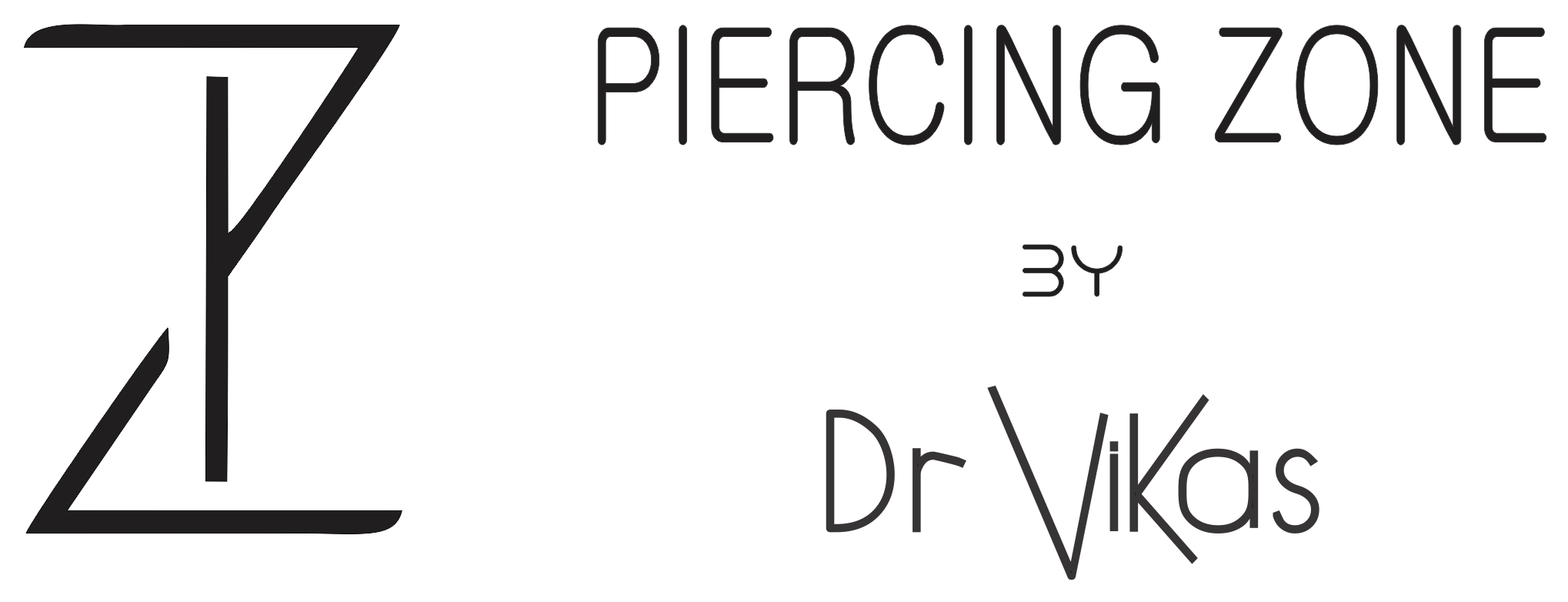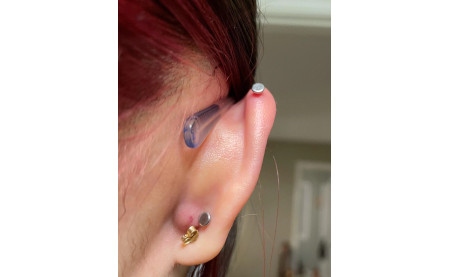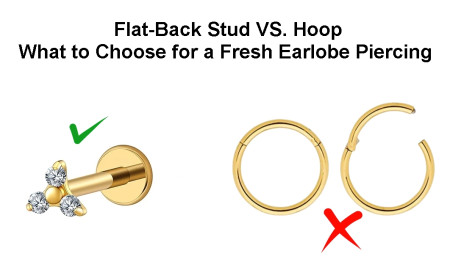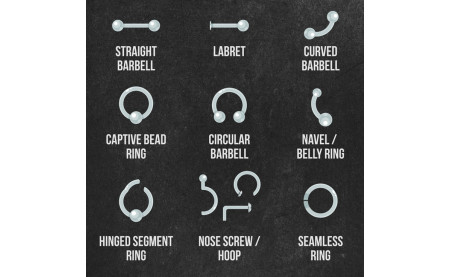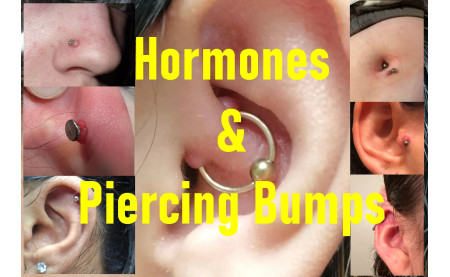Piercing Bumps Explained — Real Causes & Real Solutions
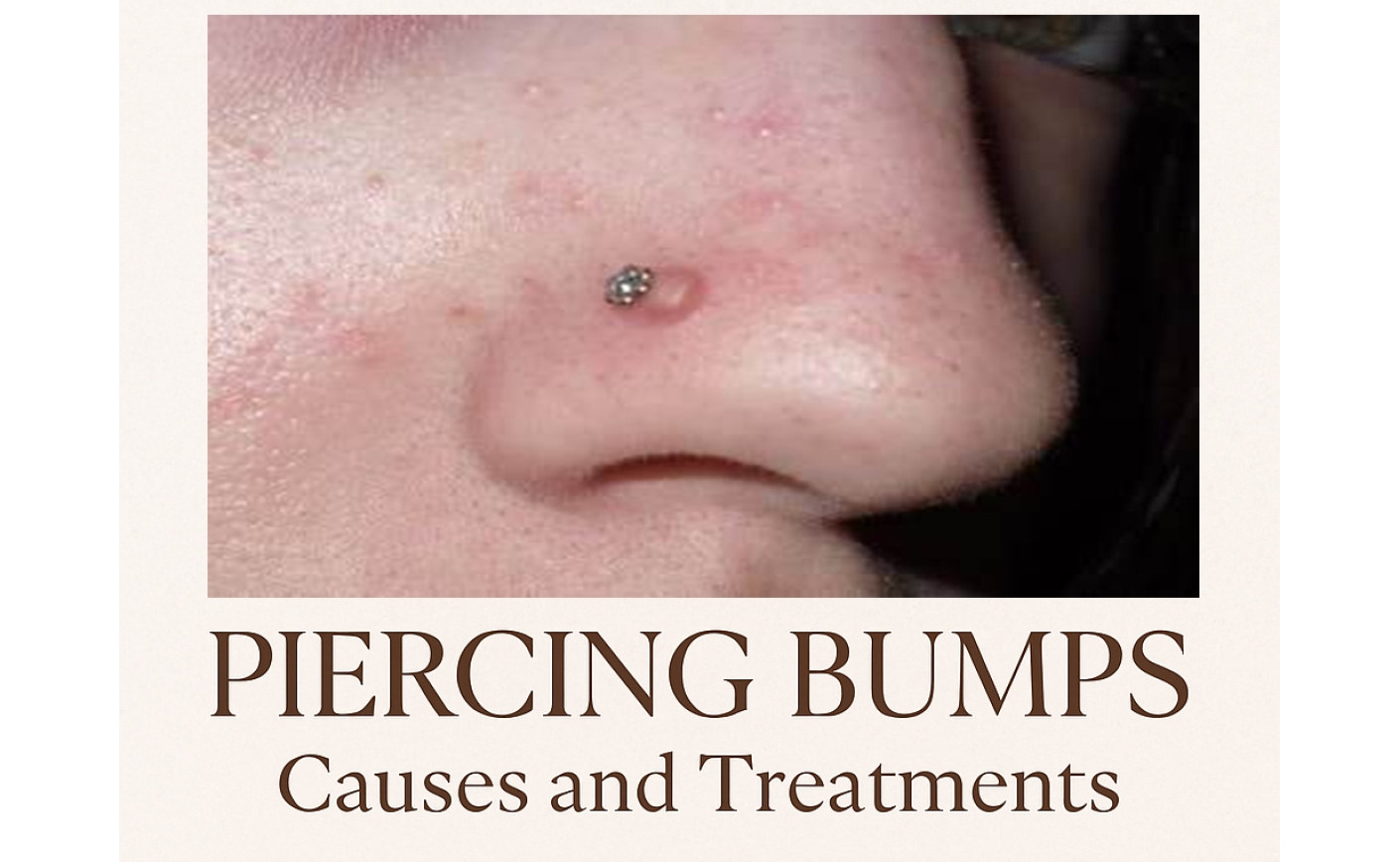
1. Introduction — Why Piercing Bumps Happen Even with Perfect Jewellery
At Piercing Zone by Dr Vikas, every piercing is performed with medical-grade ASTM F-136 titanium or solid 14K/18K gold — both 100 % hypoallergenic and piercing-safe. That means one thing clearly:
Still, some clients experience a small, raised bump around a healing piercing. This does not mean infection or rejection; rather, it’s your skin’s natural response to irritation, friction, moisture imbalance, or internal hormonal change.
Our goal in this guide is simple — to help you find the true reason behind your bump and treat it correctly, step-by-step.
2. Understanding Piercing Bumps — Different Types & Their Meaning
Before treating it, let’s understand what kind of bump you have:
| Type | Appearance | What it means |
|---|---|---|
| Irritation bump | Pink, soft, may ooze clear fluid | Tissue reacting to pressure or touch |
| Granulation tissue | Red, moist, shiny | Over-healing response; body builds excess capillaries |
| Hypertrophic scar | Firm, raised, same colour as skin | Collagen overgrowth due to friction |
| Keloid | Hard, extends beyond piercing site | Rare, genetic; needs medical attention |
At Piercing Zone by Dr Vikas, most clients experience only irritation or granulation bumps, which heal completely once the cause is corrected.
3. The Real Causes (of Bumps Despite Hypoallergenic Jewellery)
a. Touching & Twisting
Every time fingers or clothings touch a piercing, microscopic tears can occur, introducing bacteria.
Signs: redness, swelling, clear or Yellowish discharge.
Solution: stop touching; rinse twice daily with sterile saline (0.9 %). Consult with your piercer before doing anything.
b. Pressure & Sleeping on It
Constant pressure restricts blood flow and slows healing — especially for helix, conch, or nostril piercings.
Signs: flat bump on one side, tenderness.
Solution: sleep on the opposite side or use a travel pillow; check jewellery length — we can fit a slightly longer post if needed.
c. Jewellery Too Short or Tight
When swelling reduces after a few weeks, a short post can start pressing against tissue, forming a bump.
Signs: bump exactly where flat-back disc touches the skin.
Solution: visit the studio; we’ll replace it with a longer post — a 2 mm adjustment often resolves the issue.
d. Hormonal Changes
Your skin reacts to internal chemistry.
- Cortisol (stress) slows repair and increases inflammation.
- Oestrogen & Progesterone fluctuations during the menstrual cycle cause swelling.
- Testosterone & DHT in men raise oil production.
- PCOS & thyroid issues alter collagen turnover.
Signs: bump flares during stress or period.
Solution: maintain rest, hydration, vitamin C + zinc intake, and apply Base Lab Piercing Bump Oil once daily – only after consulting with your piercer. Avoid new piercings during severe hormonal fluctuation.
e. Sweating & Humidity
Moisture trapped around the piercing encourages bacterial imbalance.
Signs: moist, sticky bump after workouts or heat exposure.
Solution: cleanse with saline after sweating; dry gently using sterile gauze; avoid ointments that trap moisture.
f.Clothing, Masks & Headphones
External friction is one of the most common modern irritants.
Signs: bump appears at the contact point of mask string, collar, or headphone band.
Solution: switch to looser clothing or soft straps.
g. Incorrect Cleaning Methods
Over-cleaning or using alcohol/peroxide strips protective oils and irritates the skin.
Signs: dry, flaky, sore tissue.
Solution: discontinue harsh products; use only sterile saline twice daily.
h. Moisture Imbalance
Both extremes — too wet or too dry — interfere with healing.
- Over-wet = soft granulation bump.
- Over-dry = hard flaky bump.
Solution: keep the area “comfortably clean” — rinse, dry.
i. True Infection (rare)
MInfection is uncommon with sterile piercings and implant metals, but possible if the site was touched or the post embedded
Signs: pain, heat, yellow-green discharge.
Solution: continue saline cleaning, and apply Fucidin cream twice daily for 5–7 days (thin layer). Do not remove jewellery unless instructed — it keeps the tract open for drainage.
4. What Is Not a Cause
Many clients fear they are “allergic to metal.”
At Piercing Zone by Dr Vikas, this is ruled out completely.
Our titanium and gold are certified hypoallergenic — free from nickel, lead, or alloys that trigger reactions.
So if a bump appears, look beyond the jewellery — it’s always an external or biological factor.
5. Self-Diagnosis Checklist — Find Your Reason
- Is the bump soft or firm?
- Is it painful or just raised?
- Any discharge — clear, yellow, or none?
- Did it start after touching, pressure, or stress?
- Is the jewellery pressing tightly?
✅ If mostly soft, clear, or pain-free → irritation.
⚠️ If painful, hot, thick discharge → infection → use Fucidin + saline and consult us.
6. Treatment Matrix — Cause → Symptom → Solution
| Cause | Signs | Recommended Treatment |
|---|---|---|
| Touching / twisting | Pink, sore bump | Stop touching · Saline + Base Lab Oil |
| Pressure / sleep | One-sided bump | Sleep opposite · Longer post |
| Sweat / heat | Moist, red bump | Clean · Dry |
| Hormonal | Appears cyclically | Rest · Hydration · Base Lab Oil |
| Over-cleaning | Dry, crusty | Reduce cleaning |
| Friction (mask/clothes) | Flat irritation | Remove pressure |
| Infection | Pain · Pus | Saline · Fucidin cream 7 days |
| Dry irritation | Dull, firm bump | Sea-salt paste (1–2 days) · Base Lab Oil |
7. Safe Home Remedies That Actually Work
- Sterile saline spray: twice daily for gentle cleansing.
- Sea-salt paste: ¼ teaspoon salt + warm water → thick paste → apply 5 min × 5 days → stop.
- Warm saline compress: soothes swelling and draws trapped fluid.
- Base Laboratory Piercing Bump Oil: once daily — restores moisture balance, contains anti-inflammatory plant extracts.
- Fucidin cream: for confirmed bacterial irritation only, 5–7 days max.
Avoid: alcohol, hydrogen peroxide, betadine, tea-tree oil — too harsh for healing tissue.
8. Professional Adjustment & Re-Fitting
If the bump persists beyond 3–4 weeks, the issue may be mechanical. At Piercing Zone by Dr Vikas, we assess post length, angle, and tension using medical precision. A minor change in jewellery length or shape often resolves pressure-based bumps within days.
9. Prevention — Keep Your Piercing Calm & Healthy
- Avoid touching and twisting.
- Sleep on clean pillowcases; switch sides.
- Replace face-masks or helmets that press on piercings.
- Shower after workouts; dry piercings gently.
- Eat zinc-rich foods (pumpkin seeds, nuts) to boost healing.
- Manage stress — low cortisol = faster recovery.
10. Conclusion — Your Jewellery Is Pure; Your Healing Is Personal
Piercing bumps are not failures — they’re feedback.
They simply indicate that your skin needs a small adjustment: less pressure, calmer care, or hormonal balance.
At Piercing Zone by Dr Vikas, every procedure is built on medical precision and aftercare science. With pure titanium or gold, professional guidance, nearly every bump can be calmed and healed beautifully.
✨ Because when art meets science, healing becomes effortless.
